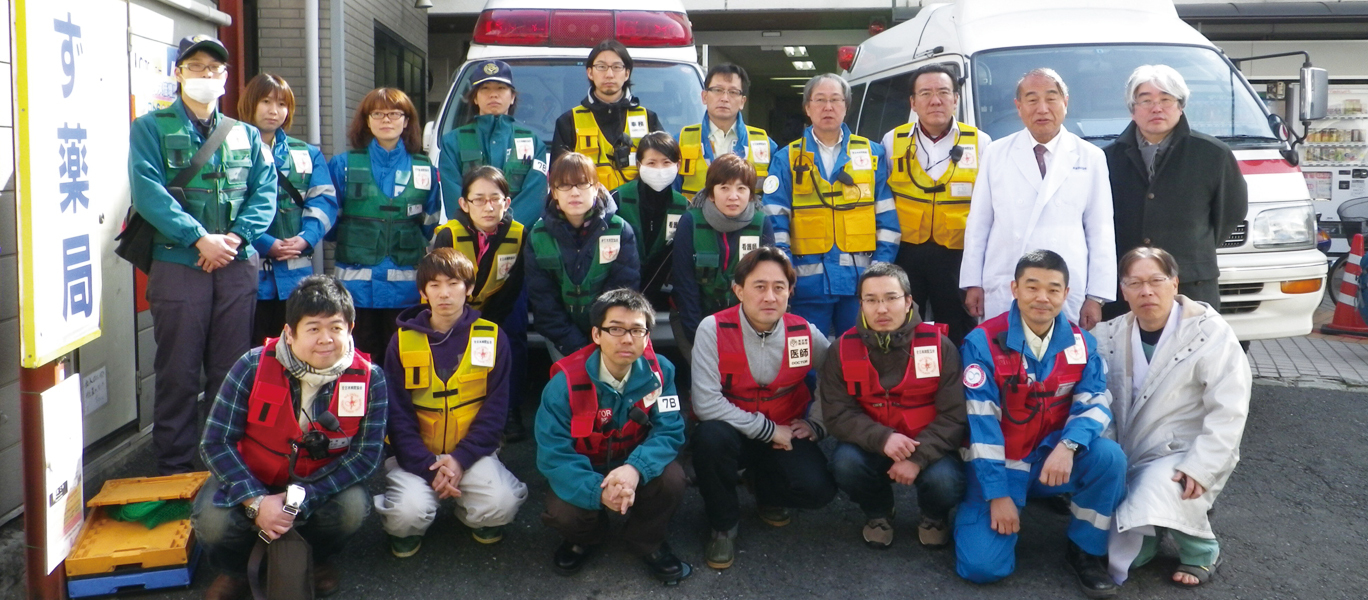ASOURCE®TIMES
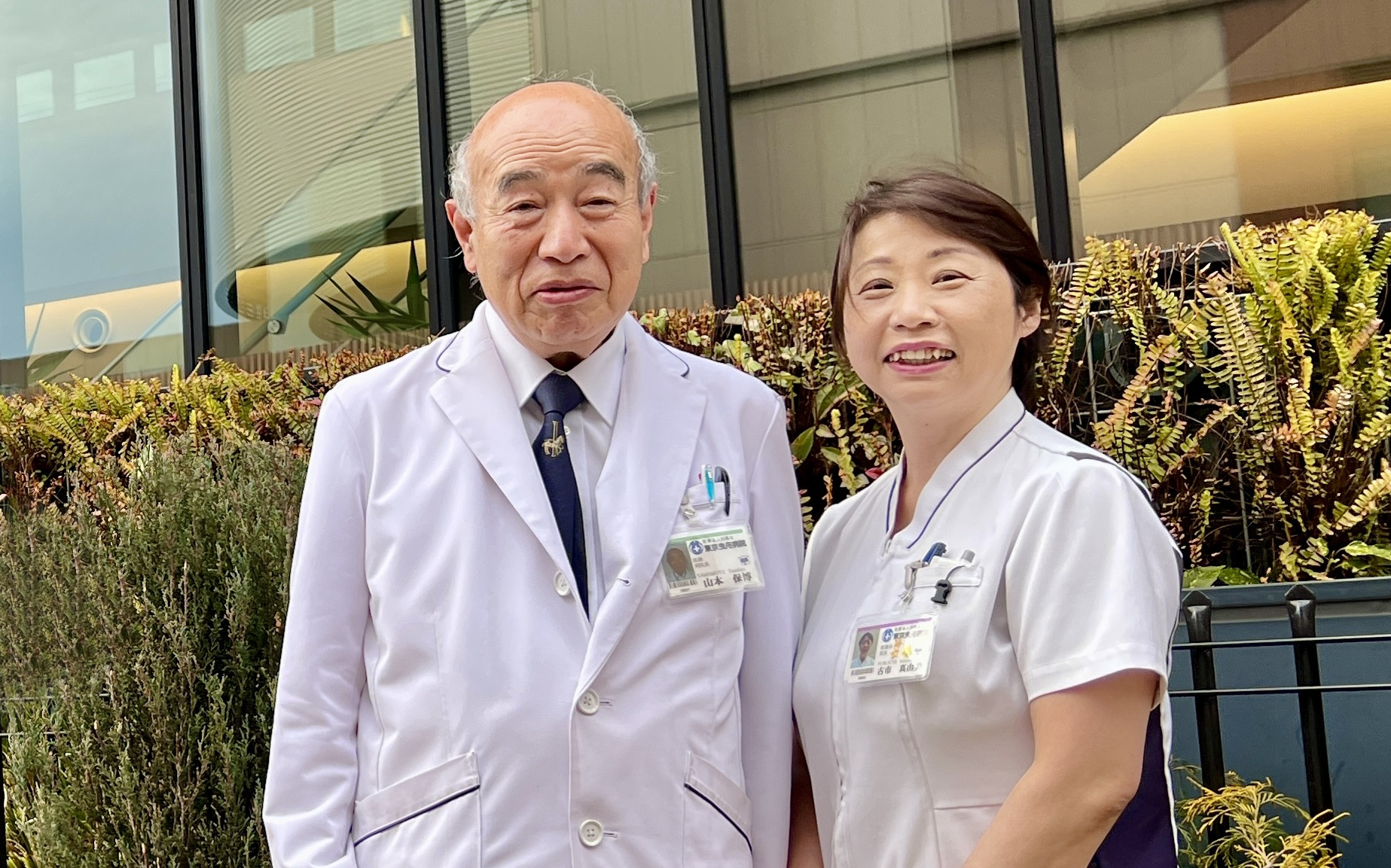
医療法人伯鳳会 東京曳舟病院 院長
日本医科大学名誉教授・医学博士
山本 保博
1968年日本医科大学卒業。1974年日本医科大学大学院研究科修了、医学博士。 日本医大付属多摩永山病院救命救急センター長を経て、1991年4月に日本医大救急医学教授。1994年1月日本医大付属千葉北総病院病院長、1997年4月日本医大救急医学主任教授、同大付属病院高度救命救急センター長。2008年3月日本医大定年退職。2016年7月医療法人伯鳳会白鬚橋病院院長、2017年4月より東京曳舟病院院長。 第13回日本外傷学会会長、第31回日本熱傷学会総会・学術集会会長、第31回日本救急医学会総会・学術集会会長、第8回アジア太平洋災害医学会総会会長、第6回国際人道医療学会東京会議(IAHM 2008 Tokyo)会長、第11回アジア太平洋災害医学会総会会長などを務める。 現在も、外務省、厚生労働省、総務省消防庁、海上保安庁、東京消防庁の救急医療関連の委員長やアドバイザーを務めている。 近著に『いのちを紡ぐ、こころを紡ぐ』(ぱーそん書房)。
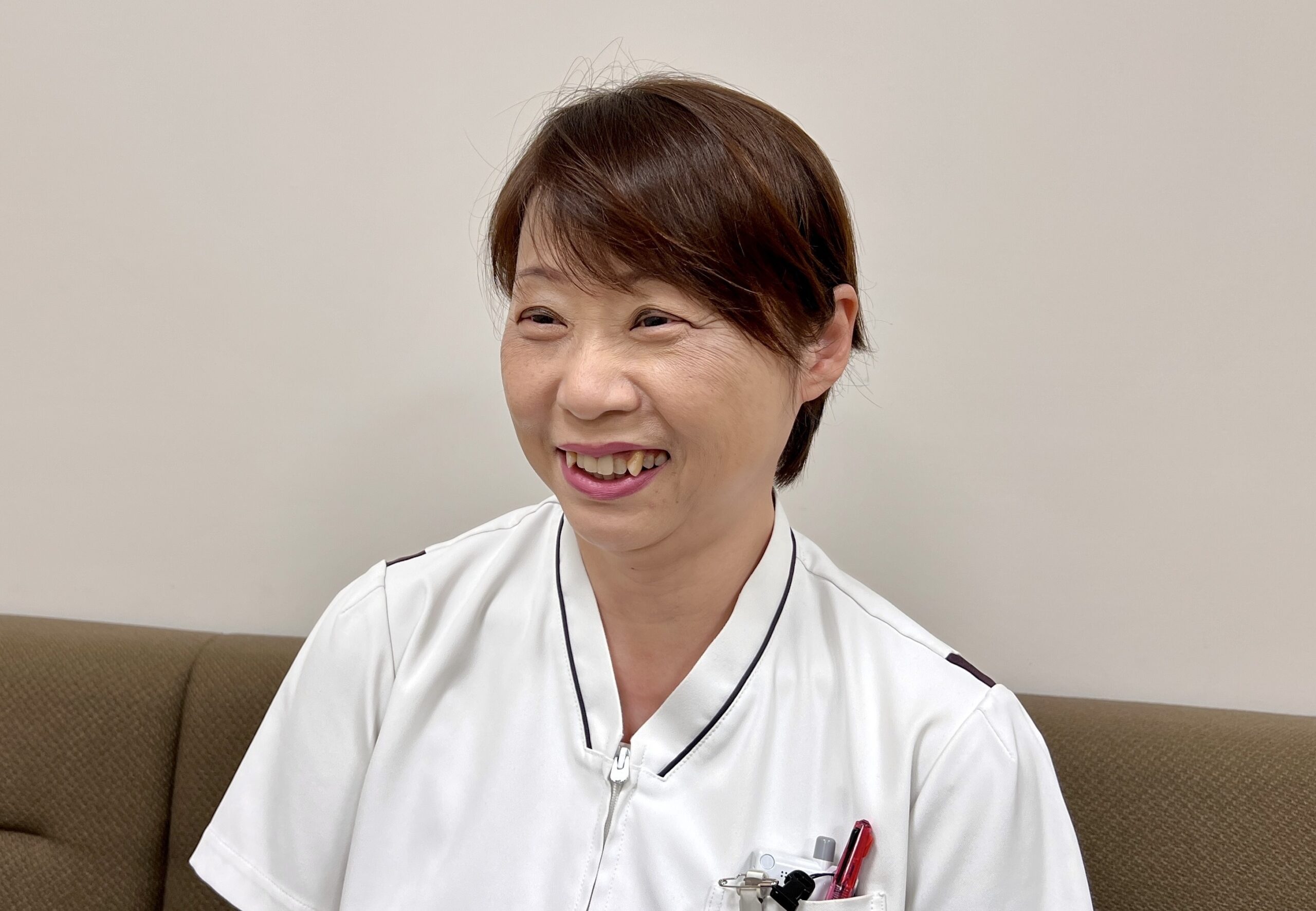
医療法人伯鳳会 東京曳舟病院
看護部長
古市 真由美
1985年白髭橋病院入職。 平成24年法人が伯鳳会に変わり、看護課長を経て現職。 DMATの発足前から災害医療に携わり、 新潟県中越地震や東日本大震災など多くの災害現場に出動。 AMAT、JMAT、東京DMAT、日本DMAT隊員。
わが国で「災害医療」という考え方が広がったのは、1995年の阪神・淡路大震災がきっかけでした。四半世紀を経て、災害時におけるヒト・モノなど医療資源のロジスティクスの整備、情報の集約と発信など、災害が起きるたびに、災害医療は進化してきました。阪神・淡路大震災以前から、災害現場で救急医療を実践してきた、東京曳舟病院院長の山本保博氏と、看護部長の古市真由美氏に、災害医療の変遷と今後の課題についてうかがいました。
私は1975年に日本医科大学付属病院救急部に勤務して以来、50年近くにわたり、救急医療に携わってきました。当時、救急医療は外科や内科の支流とされ、災害医療はそのまた支流と考えられていましたが、1995年の阪神・淡路大震災以降は災害医療が急速に発展し、2011年の東日本大震災以降は必要不可欠な医療分野になりました。
わが国では災害医療は台風や地震など自然災害が発生したときの対応というイメージですが、世界的には飢饉や、人為的つまり戦争による災害も多く、私は外務省やJICAが組織しているJMTDR:Japan Medical Team for Disaster Relief(国際緊急医療チーム)からの依頼により、アジア、中東、アフリカなど多くの国々の様々な災害現場での緊急援助に関わってきました。言葉や文化が異なり、医療に対する考え方も違う中で積み上げてきた災害医療の経験は貴重なものです。
当然ですが、日本でも大きな災害があれば、ほとんどの現場に出動してきました。世界の災害医療と比べて違っているのは、日本では医療機関に傷病者が搬送されてから、ようやく医療が始まることでした。欧米の医師たちは、災害現場に赴き、がれきの中で医療を始めます。心肺蘇生が1分遅れると救命率は10%下がるとされていますので、現場で救急措置をするか、病院に運ばれてからするかで、傷病者の救命率は大きく変わります。
災害発生後、少しでも早く現場に駆け付ける必要があることを日本の医療者が痛感したのが、阪神・淡路大震災でした。このときの現場と医療機関の混乱の経験を生かし、災害拠点病院の整備が始まり、災害派遣医療チーム(DMAT)という専門的な訓練を受けた医療チームが生まれました。現在は、厚生労働省が組織した「日本DMAT」、都道府県で発足した「東京DMAT」などのほか、AMAT(全日本病院医療支援班)、JMAT(日本医師会災害医療チーム)、日本赤十字社のDMATなどが、災害発生と同時に現場に向かい、救急医療活動を開始する体制が整っています。そして各チームは、年数回の訓練を行ない、現場での対応力を少しずつ高めています。
(山本 保博)
東京曳舟病院は、その前身である白鬚橋病院の時代から、救急医療、災害医療に積極的に取り組んできました。年間約8000件の救急搬送を受け入れ、災害が発生すれば院内の医療チームがすぐに出動し、一方で墨田・江東・葛飾の災害拠点病院として事故や災害の被災者を受け入れています。伯鳳会では、災害医療に対応できる訓練を積んだ医療者で構成するチームを「ブルーフェニックス」と名付け、現在、東京と大阪の2拠点に100人近いメンバーがいます。
この体制をさらに拡充する目的で、2021年11月に“Medical-ConneX(メディカルコネクス)”という医療車両を導入しました。これは国内外で数多くの災害医療を経験した私が発案したもので、「走る災害医療ステーション」と言えます。災害医療は災害現場の瓦礫の中から始まるとの諺通りで1分早く医療が始まれば、一人多く助けることが出来ると云われていますので、現場で1分でも早く医療を始められるように、1台はCTやX線、超音波エコーなどの画像診断装置、血液検査などの検査機器を搭載し、もう1台は電源車と大型のトレーラー型車両2台で構成しております。
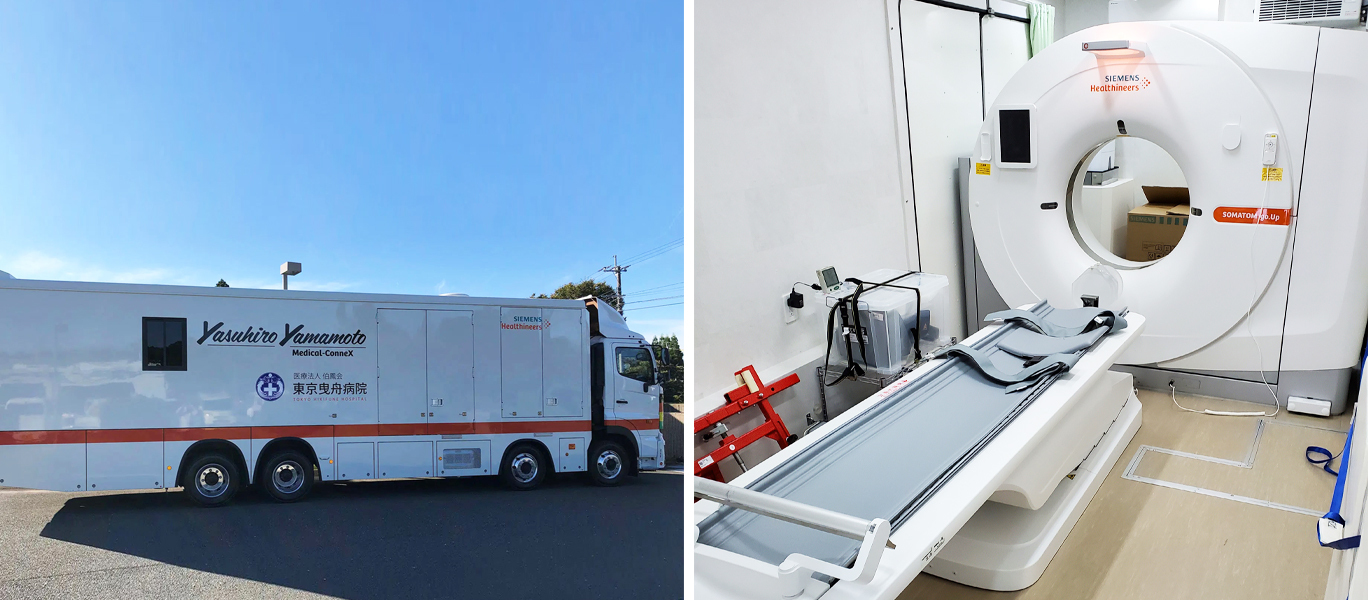
DMATは現在では、被災地の医療機関の支援活動が軸になっていますが、損なわれた医療機能の復旧に時間を要したり、ヘリなどによる被災地外への搬送が困難なことも少なくありません。Medical-ConneXを被災現場に迅速に派遣することで、いち早く被災者の救急医療の質を向上させるとともに、トリアージの精度を向上させ、DMATの活動に大きく貢献できると考えています。島しょ部など陸路での移動が難しい場合には、海路(フェリー)で移動するなど「駆けつける病院」を目指しています。
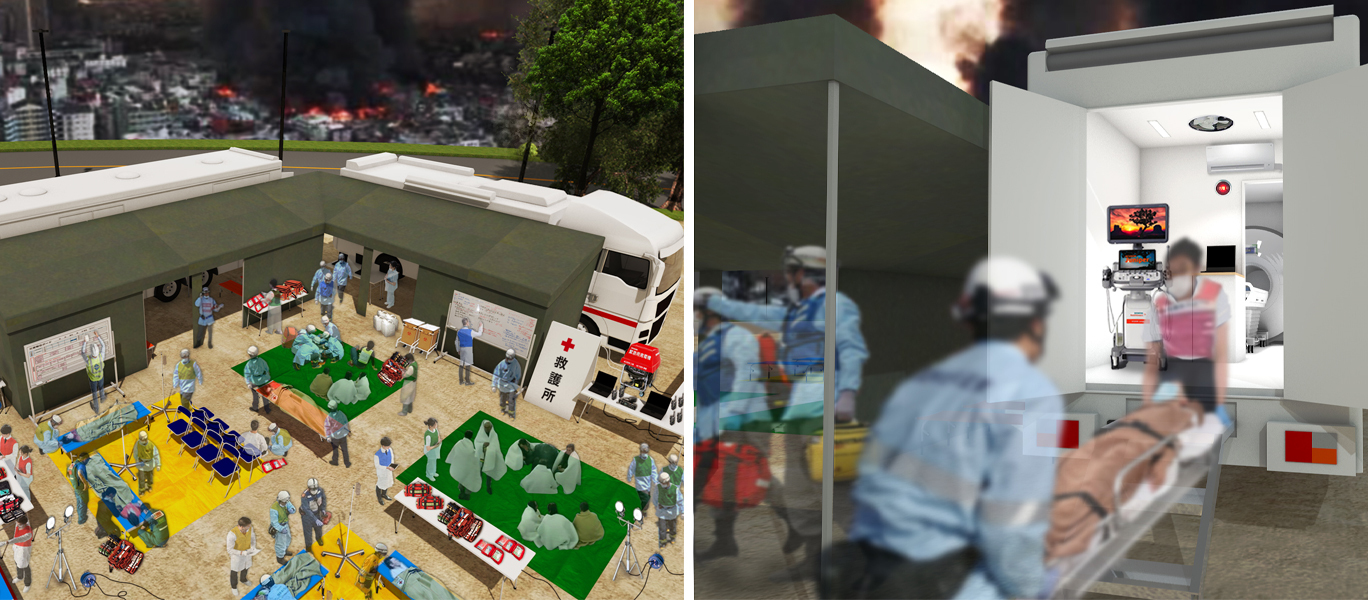
一方、災害拠点病院である当院は、洪水災害のリスクが高い地域に立地しています。そのため、東京湾の高潮や洪水に備えて大型の救助ボート2艘を備えており、年2回の実地訓練を行なっています。船による救助は、エンジンをかけることも被災者を船に引き上げることも普段経験しないことなので、重要な訓練です。訓練を通じて浮かび上がる課題も少なくありません。
新型コロナウイルスの感染が続く中、感染者の搬送が増え、本来の救急医療の流れが変わってしまっています。それでも、心疾患、脳血管疾患、骨折や出血などの患者さんを少しでも多く受け入れ、対応していくことが災害拠点病院である当院の重要な役割だと考えています。
(山本 保博)
私が災害医療に取り組むようになったのは、東京曳舟病院の前身の白鬚橋病院で、最初は病棟と救急センターを兼務していましたが、救急に運ばれてきた患者さんが、スタッフによる懸命の処置で命を取り留め、やがて治癒し退院していくという、野戦病院のような救急医療の雰囲気が好きで、救急センター専任となりました。現在は看護部長職となりましたが、何かあればすぐに救急部に駆け付けています。
災害医療との出会いは「東京都防災訓練」でした。当時の白鬚橋病院の院長だった石原哲先生は、常々「地震が起きたら、その日のうちに現場に出よう」と語るほど災害医療に積極的で、その関係で「東京都防災訓練」にて講義などのお手伝いをするなど、DMATが発足する前から災害医療に携わり、のめりこんでいきました。
特に印象に残っているのは、2004年10月に発生した新潟県中越地震です。病院の医師、看護師ら4人で現場に出かけ、まず全日本病院協会の会員病院のうち、どの病院が厳しい状況にあるのかというリサーチをしました。その後は患者が押し寄せている病院のサポートに入り、救急外来での診療の介助、応援ナースの取りまとめ、病院の看護部長と協力し人員調整などの活動を行いました。今でこそ、DMATの活動時間は72時間と決まっていますが、そのときは丸5日間、現地で活動しました。その後は日本DMATとして初めて東日本大震災に出動し、以来、数多くの災害現場や事故現場で活動してきました。
阪神・淡路大震災を契機にいろいろな災害派遣医療チームが立ち上がって以降、様々な現場での活動についての反省や検討が重ねられ、いわゆるがれきの中で72時間にわたり急性期の医療を行なうことはほとんどなくなり、地域全体を見渡し、その地域の病院の支援をすることがDMATの主な仕事になっています。
全国から駆け付けたDMATなどの医療チームを、どの地域でどういう支援をするかを決めることも重要です。かつては先陣を切ったDMATが統括したため、後続のチームが派遣先や支援内容に不満を持つことも少なくありませんでした。現在は統括DMATの研修を受けた医師がいるチームが本部機能を担い、指揮系統が混乱することはほとんどなくなりました。
DMATは医師、看護師、業務調整員(事務職、薬剤師、臨床検査技師など)で構成する4〜5人のチームです。看護師は医師をサポートするだけでなく、チーム内の情報や業務の橋渡し役であり、また他のDMATの看護師らとの情報共有なども行います。
(古市 真由美)
新型コロナウイルス感染症は災害だ、という指摘がありますが、コロナ感染は自分たちの病院に持ち込まれるもので、現場に出向いて活動する災害医療とは違うものだと考えています。2020年1月にダイヤモンド・プリンセス号でクラスターが発生したときには日本DMATが出動し、現場の対応に当たりましたが、これをきっかけに感染症に特化したDMATを作る動きも出ています。
当院ではコロナ感染者については、当初(2020年2月)から専用病棟を設けて対応してきました。週1回のコロナ対策会議では、感染対策チーム(ICT)を中心に細かい対策を検討、決定し、全職員に伝えてきました。ウイルスを職員が持ち込まないことの徹底や個人防護具の着脱訓練などを積み重ねて、クラスターを起こさないよう、2年以上頑張ってきました。一方で、年間8000台の救急車の受け入れも続けてきました。救急部のスタッフは感染対策の訓練を受けており、感染疑いがある患者でも決して断りません。
近年の相次ぐ大規模災害で被災者の様子がメディアで伝えられることが多くなり、災害医療に高い関心を抱く看護師が増えているように思います。私の後輩の中からも「将来はDMATの一員として活躍したい」という声が聞こえています。
大規模災害ではなくとも、事故や水害などは当院の周辺でも頻繁に起こっており、救急部のスタッフは東京DMATとして月に1回は出動しています。私はまず、救急医療をやりたいというムードを病院全体に広げていきたいと考えています。そして次は災害医療の現場で役割を果たせる看護師になれるような訓練も実施しようと思います。熱い気持ちを持って、救急医療、災害医療に今後も取り組んでいきます。
(古市 真由美)
